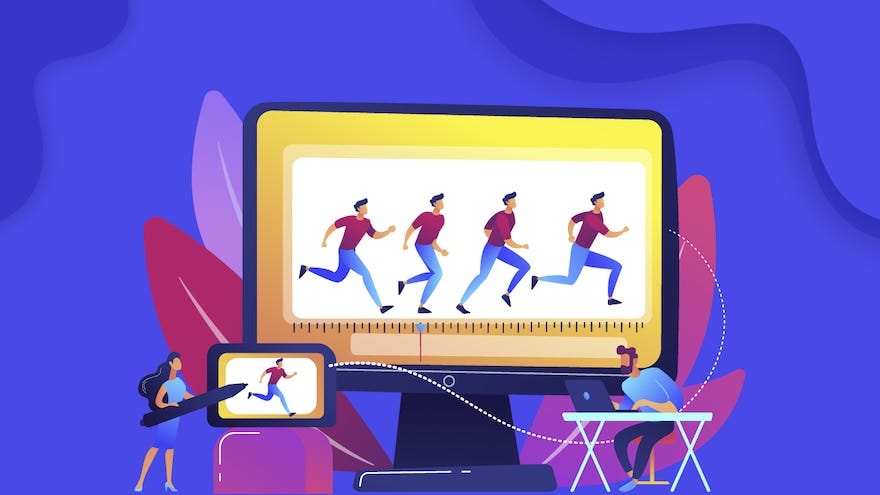The Dynamic World of Motion Graphics: Blending Art, Animation, and Design
In the ever-evolving landscape of visual media, motion graphic stand out as a dynamic and versatile form of animation. Combining elements of graphic design, animation, and multimedia, motion graphic create engaging and visually appealing content that captures the attention of audiences across various platforms. From television commercials to online videos and corporate presentations, motion graphic have become an integral part of modern communication. In this blog post, we’ll explore what motion graphic are, their applications, and why they are an essential tool for today’s content creators.
What Are Motion Graphic?
Motion graphic are a type of animation that brings graphic design elements to life through movement. Unlike traditional animation, which focuses on character-driven narratives, motion graphic are more abstract and often used to convey information, tell stories, or enhance the visual appeal of a project. Motion graphic can include text, shapes, images, and other design elements that are animated to create engaging and informative visual content.
Key Characteristics:
Design-Centric: Focuses on graphic design elements rather than character animation.
Informative: Often used to convey information quickly and effectively.
Versatile: Suitable for a wide range of applications, from marketing to education.
Applications of Motion Graphic
Motion graphic are used in various fields and for different purposes, making them one of the most versatile tools in a content creator’s arsenal. Here are some common applications:
Marketing and Advertising:
Commercials: Motion graphic are frequently used in television and online commercials to create visually appealing ads that capture attention and convey messages effectively.
Social Media: Short, engaging motion graphic are perfect for social media platforms where quick and captivating content is essential.
Explainer Videos:
Motion graphic are ideal for creating explainer videos that break down complex concepts into easily understandable visuals. These videos are commonly used by tech companies, educational institutions, and startups.
Broadcast Graphics:
Television networks use motion graphic for on-air graphics such as news tickers, lower thirds, and intro sequences. These elements enhance the viewing experience and provide additional information.
Corporate Presentations:
Motion graphic can transform mundane corporate presentations into engaging visual experiences, helping to keep the audience’s attention and make the content more memorable.
User Interface (UI) Design:
Motion graphic play a crucial role in UI design, adding animations to apps and websites that improve user experience by providing feedback and guiding user interactions.
The Creative Process
Creating motion graphic involves several steps, each requiring a combination of artistic skill and technical expertise. Here’s a brief overview of the process:
Concept Development:
The process begins with brainstorming and developing a concept based on the project’s objectives. This stage involves understanding the target audience and the key message that needs to be conveyed.
Storyboarding:
A storyboard is created to outline the visual sequence and key frames of the motion graphic. This helps in planning the flow and timing of the animation.
Design:
Graphic design elements such as text, shapes, icons, and images are created. Tools like Adobe Illustrator and Photoshop are commonly used in this stage.
Animation:
The design elements are then animated using software like Adobe After Effects. This stage involves adding movement, transitions, and effects to bring the graphics to life.
Sound Design:
Sound effects and background music are added to enhance the overall impact of the motion graphic. Sound plays a crucial role in making the animation more engaging.
Final Editing:
The final stage involves polishing the animation, ensuring smooth transitions, and making any necessary adjustments before the final rendering.
Why Motion Graphic Matter

Motion graphic have become indispensable in today’s digital age for several reasons:
Attention-Grabbing: In a world saturated with content, motion graphic stand out due to their dynamic nature, capturing viewers’ attention quickly.
Efficient Communication: They can convey complex information succinctly and effectively, making them ideal for educational and promotional content.
Versatility: Motion graphic can be adapted for various platforms and purposes, from social media snippets to full-length explainer videos.
Enhanced Engagement: By combining visual elements with motion and sound, motion graphic create a more immersive and engaging experience for the audience.
Conclusion
Motion graphic are a powerful and versatile tool in the world of animation and design. Their ability to combine artistic design with animation techniques allows for the creation of compelling visual content that can inform, entertain, and persuade. Whether you’re a marketer looking to create a memorable advertisement, an educator aiming to explain complex concepts, or a designer enhancing user interfaces, motion graphic offer endless possibilities. As technology continues to advance, the potential for innovation in motion graphic is boundless, making it an exciting field to watch and explore.
Embrace the dynamic world of motion graphic and discover how this art form can elevate your visual storytelling to new heights.
